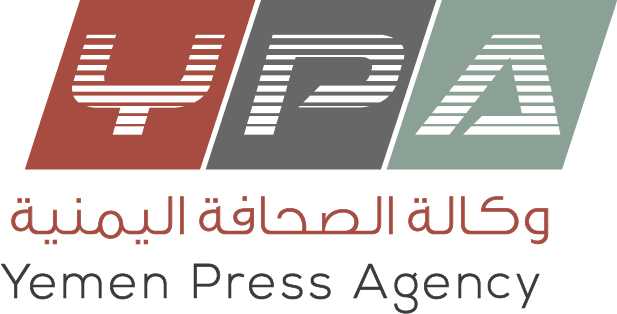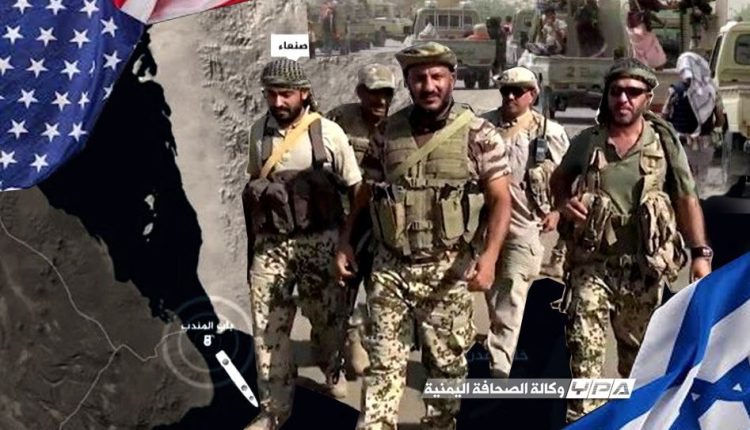Competition between rival factions heats up over title of ‘Trusted Guardian’ of US-Israeli interests in Bab al-Mandab
SANAA, Nov. 26 (YPA) -Key areas overlooking the Bab al-Mandab strait, south of Taiz and Lahj provinces, which are controlled by the Saudi-led coalition forces, are witnessing escalating tensions between Saudi Arabia and the United Arab Emirates.
The rivalry between coalition-backed factions, including the UAE-backed forces led by Tareq Saleh and the Islah Party, whose loyalties are split between Saudi Arabia, Turkey, and Qatar, is not new to Yemen’s western coast. Rather, it is part of ongoing conflict that began in recent years in the strategic districts of al-Shamaytayn and al-Hujariyah in Taiz province, southwest Yemen.
Islah Attempts to Establish a New Conflict Zone to Take Over Bab al-Mandab Strait
Western districts of Taiz province, overlooking the Bab al-Mandab Strait, have become a new arena for conflict as the Islah Party attempts to establish a foothold in the area. The conflict escalated after mid-2018, following the formation of the UAE-backed Fourth Brigade in Tawr al-Baha in 2017, which aimed to secure strategic positions in al-Hujariyah in line with external agendas.
Tensions intensified after the assassination of Adnan al-Hammadi, commander of the UAE-backed 39th Armored Brigade, in early December 2019. Al-Hammadi reportedly refused to hand over areas in al-Mawaset and al-Ma’afir to Islah forces.
Earlier, in August 2018, Islah had forced the Salafi “Abu al-Abbas Battalions” to withdraw from Taiz, pushing them into territories controlled by Tareq Saleh in the districts of Mocha and Dhubab, near the Bab al-Mandab coast.
Since then, Islah has focused on securing key mountainous areas in al-Hujariyah and al-Shamaytayn, including Bani Shaybah, Bani Muhammad, Al-Quraishah, Jabal Sabrān, Al-Zakirah, and Al-Asabah, extending to Hayjah al-Abd, the strategic link between Taiz and southern provinces in Lahj.
After intense clashes with Abdelhakim al-Jabzi, operations chief of Al-Hammadi’s brigade—who reportedly fled following the killing of his son, Asil, by Islah fighters in mid-2020—Khalid Fadel, the Islah-appointed commander of the Taiz axis, led a military force into Al-Turba, the administrative center of al-Shamaytayn.
Attention then shifted to capturing Mocha from Tareq Saleh. In response, the UAE reportedly reinforced Saleh’s forces with military equipment and funding, particularly after its normalization with Israel in 2020. These developments have significantly altered the balance of power along Yemen’s western coast. Islah commander Abdo Farhan al-Mikhlafi, known as “Salem,” was seen in a video publicly requesting Turkish military support to take control of Mocha.
UAE Exploits Tareq Saleh’s Forces to Counter Islah Expansion in Western Yemen
The United Arab Emirates (UAE) has reportedly relied on Tareq Saleh to counter the military expansion of the Islah Party along the coasts of Mocha and Dhubab. UAE commanders in Mocha reportedly viewed Islah’s growing presence as a strategic threat serving competing agendas. In response, Tareq Saleh mobilized thousands of fighters from the al-Hujariyah region into his factions in Mocha to confront the Islah expansion.
Despite these efforts, Saleh’s forces failed to achieve a decisive military breakthrough, and the contested areas continue to experience tensions, clashes, and targeted killings. Islah-aligned Popular Mobilization forces reportedly maintain control of Jabal Bayhan, deploying heavy and medium weaponry, while the strategic heights of Jabal Munif have reportedly been used as a missile-launching base.
Additionally, Islah reportedly trained a military brigade from the Al-Wazaiya district with support from Islah leader Hamoud al-Mikhlafi. These developments have turned the western districts of Taiz into an ongoing battleground between Tareq Saleh’s forces and Islah.
Amid these local dynamics, Tareq Saleh suddenly became a member of the so-called “Presidential Leadership Council” when the UAE reportedly placed him there during the Riyadh consultations in April 2022. His inclusion was seen as part of efforts to advance shared military and economic interests with the UAE’s ally, Israel, in the Bab al-Mandab region.
The military commander reportedly used his new influence to curb the Islah Party’s influence in the rural areas of Taiz and the coastal regions near Mocha. In June, he reportedly halted the recruitment of approximately 5,000 Islah fighters who were intended for specialized units tasked with securing the districts near the Bab al-Mandab coast.
He also tightened his control over the Al-Wazaiya community, though he reportedly failed to establish armed control over al-Shamaytayn by November of the same year.
Salafi Factions Enter Bab al-Mandab Conflict in service of Foreign Agendas
Conflict over the Bab al-Mandab coastline in western Taiz is no longer limited to forces loyal to Tareq Saleh and the Islah Party. Extremist Salafi factions have emerged as additional actors in the region, reportedly acting in line with foreign agendas.
Among these groups are the UAE-funded “Al-Amaliqa” and Saudi-backed “Dera al-Watan,” both seeking control over the coastal district of Al-Madaribah Wa Al Arah in Lahj province, according to reports in November.
The rivalry between regional powers has escalated to the point that local commanders within these factions reportedly no longer know who is making decisions or directing their actions.
This was highlighted in a resignation submitted on November 13 by Sarwar Abdullah, chief of staff of Second Brigade of “Dera al-Watan”, who expressed frustration over unclear decision-making within the group.
Consequently, the mix of internal contradictions and increasingly hardline tendencies—despite these factions stated allegiance to Saudi Arabia and the UAE— has created environment ripe for extremism and risky for international shipping through the Bab al-Mandab Strait.
This threat arises from both escalating infighting and the spread of piracy, as well as the involvement of local commanders in illicit activities including drug, arms smuggling and human trafficking, which reportedly yield millions of dollars.
Foreign Military Bases to Protect Israeli Shipping and Launching War Against Yemen
Tareq Saleh has sought to present himself as a guarantor of international navigation in the Red Sea, issuing public statements against Iran and positioning his forces as a stabilizing actor.
According to officials in the Sanaa government, his stance earned him favorable Israeli media coverage that effectively portrayed him as a strategic partner to Israel. The claims come after Sanaa authorities announced a ban on the passage of all Israeli ships in the Red Sea during the “Al-Aqsa Flood” operation, in support for the people of Gaza.
In contrast, the Islah Party continues to push for influence along Yemen’s Red Sea coastline and the Bab al-Mandab area, seeking to establish a foothold for its armed factions. The Islah party is particularly focused on expanding Turkish and Israeli influence, underscoring how Yemen has increasingly become a theater for external powers.
Despite this, the establishment of joint military bases on the Yemeni islands of Mayun, Zuqar, Abd al‑Kuri, Samhah, and Socotra—as well as an airstrip near Bab al‑Mandab in Bani al‑Hakam in Dhubab district and other locations—is seen as nothing more than reinforcing US, Israeli, and British dominance over international navigation in the Red Sea.
At the same time, these sites serve as launch points for hostile operations against Yemen at the expense of its sovereignty. This is especially evident, after the UAE turned Somalia’s Bosaso port and Yemen’s Socotra Island, east of the Gulf of Aden, into a network for smuggling weapons to its allied factions in Yemen, Sudan, and Libya, fueling conflicts that serve the US-Israeli agenda in the region.
Competing for the Title of Guardian of US and Israeli Interests
Recent developments show that what is happening around the Bab al-Mandab coastline, as well as in the strategic interior highlands overlooking these coasts—in the above-mentioned districts is not a local tribal or political conflict. But it is part of a process of ‘geopolitical restructuring’ led by regional and international powers through their local proxies.
Pursuing conflicting agendas amid fierce competition among themselves, the local proxies seek to present themselves as the ‘trusted guardians’ of US and Israeli interests, giving little regard to Yemen’s security, stability, or sovereignty. In fact, their recent maneuvers are pushing international navigation in the Red Sea to the brink of catastrophe.
@E.Y.M


